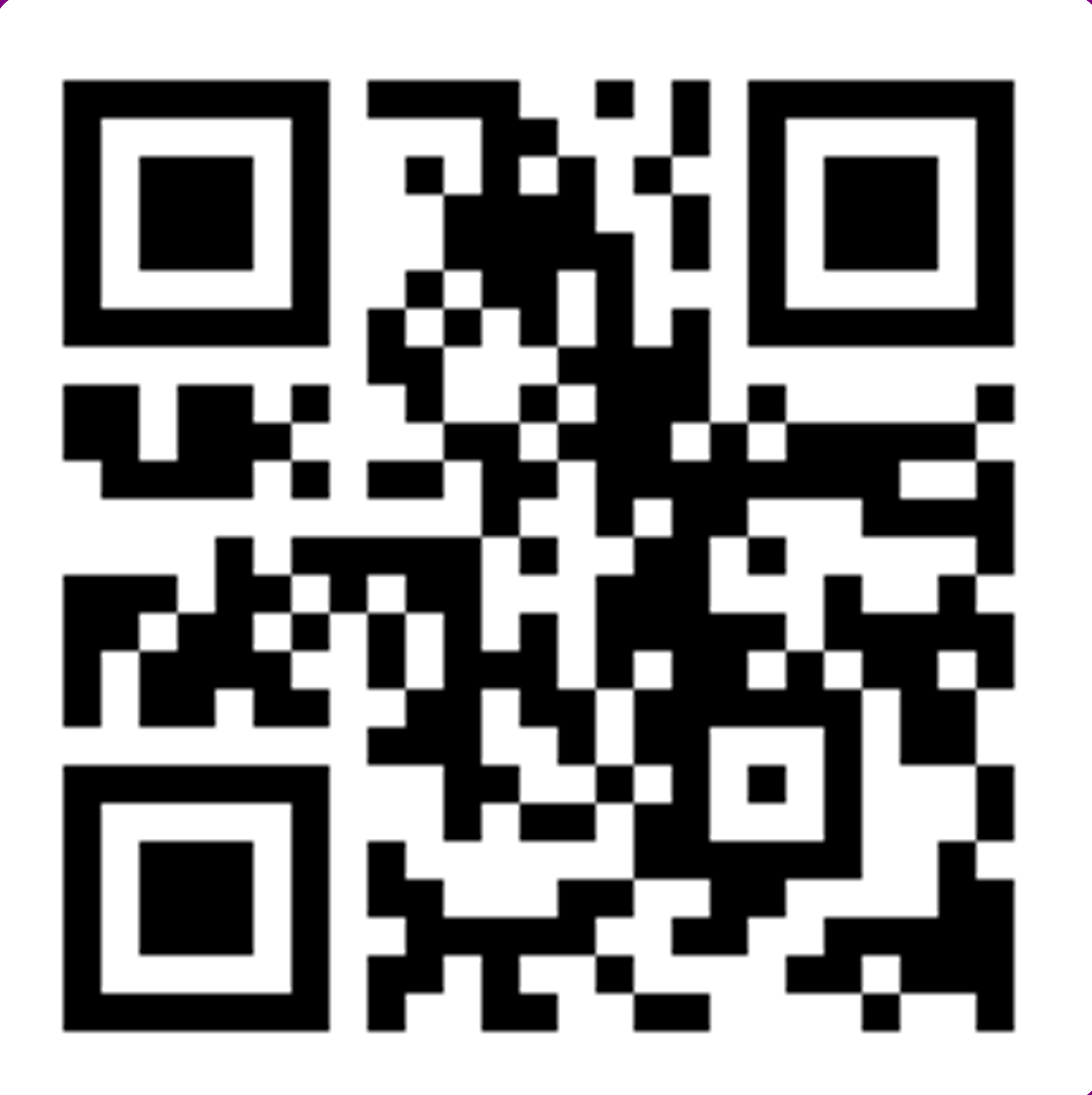ค้นหางานศิลปกรรม
ฐานข้อมูลศิลปกรรมในเอเชียตะวันออกเฉียงใต้
จิตรกรรมภาพเขียนสีก่อนประวัติศาสตร์ผาแต้ม
สามารถแบ่งได้เป็น 4 กลุ่ม ตามชื่อหน้าผาเรียงต่อกันไปคือผาขาม ผาแต้ม ผาหมอนน้อย และผาหมอน ทั้งหมดนี้หันหน้าไปทางทิศตะวันออก1. ผาขามแสดงภาพปลาขนาดใหญ่ 4 ตัว ยาวประมาณ 0.35 - 1.00 เมตร เขียนด้วยสีแดงแบบเห็นโครงสร้างภายใน ( x-ray ) นอกจากนั้นมีภาพช้าง 1 ตัว ซึ่งมีขนาดเล็กกว่าปลามาก (ประมาณ 13 ซม.) และภาพสัตว์สี่เท้า 1 ตัว2. ผาแต้มภาพเขียนปรากฎมีตลอดแนวหน้าผายาว 180 เมตร สูงจากพื้นประมาณ 4 - 5 เมตร ภาพที่เขียนลงสีไว้มีมากกว่า 300 รูป ที่ผาแต้มนี้มีภาพที่เกิดจากการฝนเซาะร่องลงไปในเนื้อหินเป็นลายเส้นเรียงแถวตามแนวตรงบ้าง เฉียงบ้าง แนวนอนบ้าง สูงตั้งแต่ 5 - 15 ซม. ส่วนนี้ยังคงมีหลงเหลืออยู่ในช่วงยาวประมาณ 80 ซม.เท่านั้น อาจเป็นภาพสัญลักษณ์บางอย่างสำหรับภาพเขียนสีซึ่งมีอยู่เป็นจำนวนมากที่บริเวณนี้ ส่วนใหญ่เขียนด้วยสีแดง มีสีดำและสีขาวบ้าง แบ่งเป็นภาพคนซึ่งมีขนาดเล็ก พบเพียง 10 ภาพภาพสัตว์ เช่น ช้าง ปลา เต่าหรือตะพาบน้ำ สุนัข วัว ไก่หรือนก เป็นต้น มักแสดงภาพขนาดใหญ่ราวกับเท่าของจริง โดยเฉพาะช้างและปลาที่มีขนาดยาวถึง 4 เมตร สูงประมาณ 3 เมตร ภาพสัตว์นี้พบประมาณ 30 ภาพ ทั้งภาพคนและสัตว์ มักอยู่ในอาการเคลื่อนไหวภาพวัตถุสิ่งของ อาจเป็นเครื่องมือจับปลาที่เรียกว่า "ตุ้ม" และหน้าไม้ หรือคันธนูซึ่งคนกำลังถือใช้งานอยู่ภาพสัญลักษณ์ เป็นลายเส้นวกเวียนไปมา หรือเป็นเส้นหยัก ลูกคลื่นหรือฟันปลา ซึ่งอาจหมายถึง"น้ำ" หรือกับดักปลา ลายก้างปลา ลายรูปทรงเรขาคณิต ลายเส้นขนานคล้ายทุ่งนา เป็นต้นภาพมือ ซึ่งพบอยู่เป็นจำนวนมากกว่า 200 มือ มีทั้งมือผู้ใหญ่ และมือเด็ก และมีทั้งสีแดง สีดำ และสีขาว ภาพทุกประเภทเขียนอยู่ร่วมกันเสมอ โดยเฉพาะภาพมือ ปรากฏมีสอดแทรกกับภาพอื่นๆ ทุกภาพภาพเขียนส่วนมากเขียนแบบระบายสีเงาทึบ (silhouette) นอกนั้นเป็นแบบโครงร่างรอบนอก (outline) และแบบกิ่งไม้ (stick man) ส่วนภาพมือมีรูปแบบการทำหลายแบบ มีทั้งแบบพ่น (stencil) แบบทาบ (imprint) และแบบเขียนเส้นโครงรอบนอก (outline)3. ผาหมอนน้อยแสดงภาพคนสูงประมาณ 1.6 เมตร กำลังเหนี่ยวคันธนูเล็งไปยังสัตว์สี่ขาซึ่งอาจเป็นวัวตั้งครรภ์ ลำตัวยาวประมาณ 6.4 เมตร ต่อมาเป็นภาพคนสูงประมาณ 1.2 เมตร กำลังไล่สัตว์สี่ขามีเขาอาจเป็นกวางที่บุกรุกเข้าไปในนาข้าว ซึ่งรอบๆภาพกลุ่มนี้มีภาพมือทั้งซ้ายและขวาประมาณ 20 มือ ทำขึ้นโดยการทาสีบนฝ่ามือแล้วขูดสีบางส่วนที่นิ้วและฝ่ามือออกแล้วจึงทาบมือลงบนผนัง ถัดมาเป็นภาพสัตว์สี่ขา 3 ตัว ท้องป่องคล้ายตั้งครรภ์เช่นกัน กับภาพลายเส้นคล้ายตาข่ายดักสัตว์ นอกจากนี้ก็มีภาพลายเส้นคู่ขนานต่อกัน และภาพมือที่มีลักษณะเช่นเดียวกับกลุ่มแรกอีกประมาณ 15 มือ เรียงกันเป็นแถวยาวกับลายเส้นหยักขึ้นลงวกไปมาด้วย ภาพคนและสัตว์ระบายสีแดงแบบเงาทึบ (silhouette)เป็นที่น่าสังเกตว่าภาพเขียนสีที่ผาแต้มและผาหมอนน้อยนี้ ภาพทุกประเภทมีความสัมพันธ์เป็นเรื่องราวเดียวกัน ไม่ว่าจะเป็นภาพคนกับวัวกับภาพมือ ภาพปลากับมือ ภาพ"ตุ้ม"กับมือ และสัญลักษณ์ ภาพทุ่งนากับคนกับกวางกับมือ ภาพคนกำลังล่าวัวหรือกวาง4. ผาหมอนภาพทั้งหมดในส่วนนี้เขียนด้วยสีแดงแบบระบายเงาทึบ (silhouette) ประกอบด้วยภาพคนและสัตว์ กลุ่มแรกมีภาพคนเพียงคนเดียวกับภาพสัตว์สี่ขา 11 ตัว อาจเป็นช้าง วัว สุนัข และหมูหรือแกะหรือแพะเดินตามกันไปในทิศทางเดียวกัน (ยกเว้นสัตว์ตัวหนึ่งซึ่งอาจเป็นสุนัขที่หันหน้าเข้าหาฝูงสัตว์) กลุ่มที่สองเป็นภาพคนประมาณ 10 คน เขียนแบบระบายเงาทึบกับแบบกิ่งไม้ มีลักษณะค่อนข้างเหมือนจริง แสดงกล้ามเนื้อน่องโป่งพองด้วย ภาพที่น่าสนใจของที่ผาหมอนนี้คือภาพคนนุ่งกระโปรงยาวครึ่งน่อง ยืนท้าวสะเอว มีขนาดใหญ่กว่าภาพคนอื่นๆ ไม่รู้แน่ว่าเป็นหญิงหรือชาย นอกจากนี้มีภาพมือข้างขวาของผู้ใหญ่แบบพ่น (stencil) 2 มือ และแบบทาบ (imprint) อีก 2 มือ และมือเด็กแบบทาบอีก 2 มือด้วย ภาพเขียนสีทั้ง 4 กลุ่มนี้จะเห็นได้ว่ามีภาพมือเข้าไปเกี่ยวข้องด้วยเสมอ อาจหมายถึงการร่วมมือร่วมแรงกันทำกิจกรรมบางอย่าง เช่น ร่วมมือกันจับปลา ทำการเพาะปลูก เลี้ยงสัตว์ หรือล่าสัตว์ แสดงให้เห็นถึงวิถีชีวิตความเป็นอยู่ของผู้วาดภาพเหล่านั้นว่าอยู่ในสังคมเกษตรกรรม และยังอาจหมายถึงการมีความเชื่อร่วมกันในเรื่องความอุดมสมบูรณ์อีกด้วย
จิตรกรรมภาพเขียนสีก่อนประวัติศาสตร์เขาจันทน์งาม
ภาพเขียนสีทั้งหมดเขียนด้วยสีแดง อยู่สูงจากพื้นดินประมาณ 2-4 เมตร การศึกษาที่ผ่านมาของกรมศิลปากรและมหาวิทยาลัยศิลปากรได้จัดแบ่งภาพเขียนสีที่พบเป็น 12 กลุ่มตามตำแหน่งที่พบ โดยรวมแล้วมีภาพทั้งหมด 44 ภาพ เป็นภาพคน 32 ภาพ ภาพสัตว์ 5 ภาพ (สุนัข นกหรือไก่ ตะกวด? เม่น? เสือ?) คันธนูและลูกศร 1 ภาพ และไม่ทราบว่าเป็นภาพชนิดใด 5 ภาพ เทคนิคการเขียนภาพมี 2 แบบ คือ ภาพเงาทึบและลายเส้นโครงร่างภายนอก ภาพคนส่วนใหญ่มีส่วนน่องโต มีผ้านุ่ง ไม่สวมเสื้อ ผู้หญิงจะมีหางนกห้อยมาจากกระเบนเหน็บและพู่ประทับบนหัวกลุ่มที่ 1 เป็นภาพชุดที่เด่นและสำคัญที่สุด อยู่บนผนังหินด้านทิศตะวันออก เนื้อที่ขนาด 1x2 เมตร เป็นภาพเขียนแบบเงาทึบ ภาพมี 2 แถว (บนและล่าง) ลักษณะเป็นรูปกลุ่มคน 14 คน มีทั้งเพศชายและหญิง วัยเด็กและผู้ใหญ่ รวมทั้งภาพสุนัข 1 ตัว โดยมีรายละเอียดคือแถวบน เป็นภาพคน 3 คน คนแรกมีเพียงครึ่งซีก ไม่มีหัว คนที่ 2 ยืนกางแขน มีผ้ากางออกมาจากส่วนเอวทั้ง 2 ข้าง ชายผ้ามีแฉกเป็นริ้วๆ เป็นภาพที่เขียนด้านตรง แต่หันหน้าเอียงไปทางขวา คนที่ 3 เขียนให้เห็นด้านข้าง หันหน้าไปทางตรงกันข้ามกับคนที่ 2 ภาพนี้ไม่เต็มรูป ขาดส่วนคอ ลำตัวบางส่วน และต้นขาแถวล่าง เป็นขบวนภาพคนเดินเรียงเป็นแถว ภาพแรกของแถวล่างอยู่ต่ำจากแถวบนประมาณ 30 เซนติเมตร เป็นภาพคนยืนถือธนูในท่าทางกำลังยิงธนู โดยลูกธนูถูกยิงออกจากคันธนูแล้ว ภาพนี้เป็นภาพเขียนให้เห็นด้านข้าง มีเส้นผมอยู่บนหัว นุ่งผ้าห้อยหน้าหลัง ชายผ้าด้านนอกมีแฉกเป็นริ้วๆ ขาด้านหลังสลับเลื่อนไป ต่อจากภาพนี้เป็นภาพสุนัข หูตั้ง หางดาบ มีอวัยวะเพศบ่งบอกว่าเป็นตัวผู้ ลักษณะตัวผอมยาว ต่ำจากภาพสุนัขลงมาเล็กน้อยเป็นภาพคนนั่งชันเข่า คนที่ 2 เป็นภาพผู้หญิงมีท้องใหญ่ เปลือยอก มีหางคล้ายหางนก ภาพ 2 คนนี้อยู่ในลักษณะที่กำลังเล่นหรือคุยกัน คนหนึ่งเป็นผู้ชาย คนหนึ่งเป็นผู้หญิง ภาพถัดไปเป็นภาพคนยืนเท้าเอว นุ่งผ้า 2 ชิ้นหน้าหลัง แขนขวายกตั้งศอก เป็นภาพเขียนด้านข้าง ห่างจากภาพนี้ไปประมาณ 20 เซนติเมตร เป็นภาพคนยืนหลังค่อม บนหัวมีเส้นผม นุ่งผ้า 2 ชิ้นหน้าหลัง ชายผ้าด้านหน้ามีแฉกเป็นริ้วๆ มือขวายื่นออกไปถือสิ่งของคล้ายไม้เท้า ข้างหน้าภาพนี้เป็นภาพคนยืนยกแขนทั้ง 2 ข้าง คล้ายอยู่ในท่ารำ ต้นขาด้านหลังขาดหายไป ภาพถัดไปเป็นภาพผู้หญิง เห็นด้านข้างในท่าร่ายรำ ข้างหน้าภาพผู้หญิงเป็นภาพคนยืนยื่นแขนออกไปข้างหน้า มีผ้าปิดหน้า หลังชายผ้ามีรูปกากบาท ภาพถัดไปเป็นภาพเด็ก 2 คน อยู่ในท่ารำ คนหนึ่งยกแขกนทั้ง 2 ข้างขึ้น อีกคนหนึ่งมือซ้ายเท้าเอว มีขวายกขึ้น นุ่งผ้า 2 ชิ้นปิดหน้าหลัง ภาพถัดไปเป็นภาพสีแดงจางๆกลุ่มที่ 2 อยู่บนผนังหินด้านทิศตะวันออกใกล้กับภาพกลุ่มที่ 1 แต่อยู่คนละผนังหิน มีภาพคนชดเจน 1 ภาพ เป็นภาพคนผมยาวกำลังวิ่งหรือรำ มองเหลียวหลัง จากเข่าลงไปถึงปลายเท้าขาดหายไป ผนังด้านนี้มีรองรอยของภาพเขียนสีอยู่แต่ลบเลือนไปหมด เห็นเพียงสีแดงเป็นแถบๆกลุ่มที่ 3 อยู่บนผนังหินด้านทิศตะวันออก เป็นภาพคนกำลังจับสัตว์เลื้อยคาน ลักษณะคล้ายสัตว์กิ้งก่า แย้ หรือตะกวด ห่างจากภาพคนเล็กน้อยมีลายเส้นคดไปมา 3 เส้นกลุ่มที่ 4 อยู่บนผนังหินด้านทิศตะวันออก เป็นภาพคน 3 คน ไม่มีศีรษะ แสดงท่าทางยืนมีคนนุ่งผ้าคล้ายกระโปรงสั้นเหนือเข่า 2 คนกลุ่มที่ 5 อยู่บนผนังหินด้านทิศตะวันตก ภาพคน 3 คน ยืนขนาบภาพสัตว์คล้ายเม่นหรือหมูป่า ใช้เทคนิคเขียนภาพ 2 แบบ คือ แบบโครงร่างภายนอกและแบบเงาทึบ ภาพสัตว์และคนยืนอยู่หน้าสัตว์เขียนแบบโครงร่างภายนอก ส่วนภาพเขียนแบบคล้ายคล้ายเงาทึบเป็นภาพคนอยู่ในท่าทางกำลังวิ่ง นุ่งผ้าปิดหน้าหลัง 1 ภาพกลุ่มที่ 6 ภาพคน 3 คน ภาพที่สมบูรณ์ที่สุดในกลุ่มนี้อยู่ตรงกลาง เป็นภาพคนกางแขน นุ่งผ้าปิดหน้าหลัง แต่ส่วนตั้งแต่เข่าลงไปขาดหายไป สันนิษฐานว่าเป็นท่าร่ายรำ อีก 2 คนภาพขาดหายไป โดยหายไปครึ่งตัว ตั้งแต่หัวถึงกลางตัว 1 ภาพ และจากสะโพกลงไป 1 ภาพกลุ่มที่ 7 เป็นภาพสัตว์ภาพเดียว รูปร่างค้ลายสิงโตหรือเสือ ข้างหน้าสัตว์มีสีแดงเป็นจุดๆ รวม 5 จุด เกิดจากสีบางส่วนขาดหายไปกลุ่มที่ 8 รูปคน 2 คน แสดงท่ารำ มีเพียงครึ่งตัวด้านบน ส่วนล่างขาดหายไปกลุ่มที่ 9 รูปคน 1 คน ยืนยกแขนส่วนปลายแขนกับขาขาดหายไป 1 ข้าง ด้านข้างคนมีลายเส้นวาดยาวตามแนวตั้ง อาจจะเป็นภาพคนที่ลบเลือนไป (?)กลุ่มที่ 10 รูปคน 1 คน ไม่มีศีรษะ อยู่ในลักษณะท่าทางคู้ตัวกลุ่มที่ 11 มีรูป 3 รูป อาจเป็นภาพคนทั้ง 3 รูป แต่ภาพลบเลือนขาดไป กลุ่มที่ 12 เป็นภาพคนครึ่งตัว แขนข้างขวากางออกจากลำตัว แขนซ้ายเยียดตรงขนานกับพื้น



